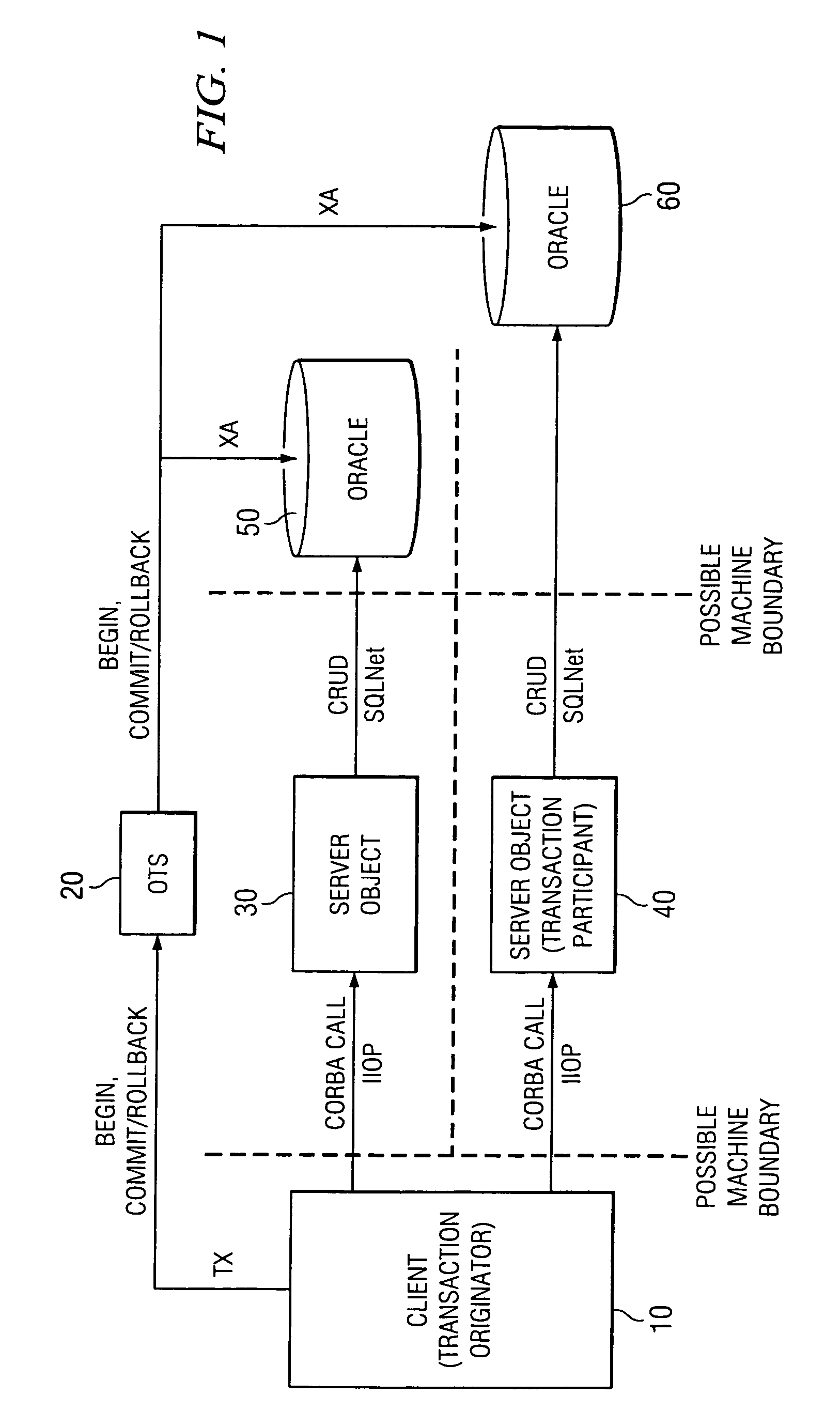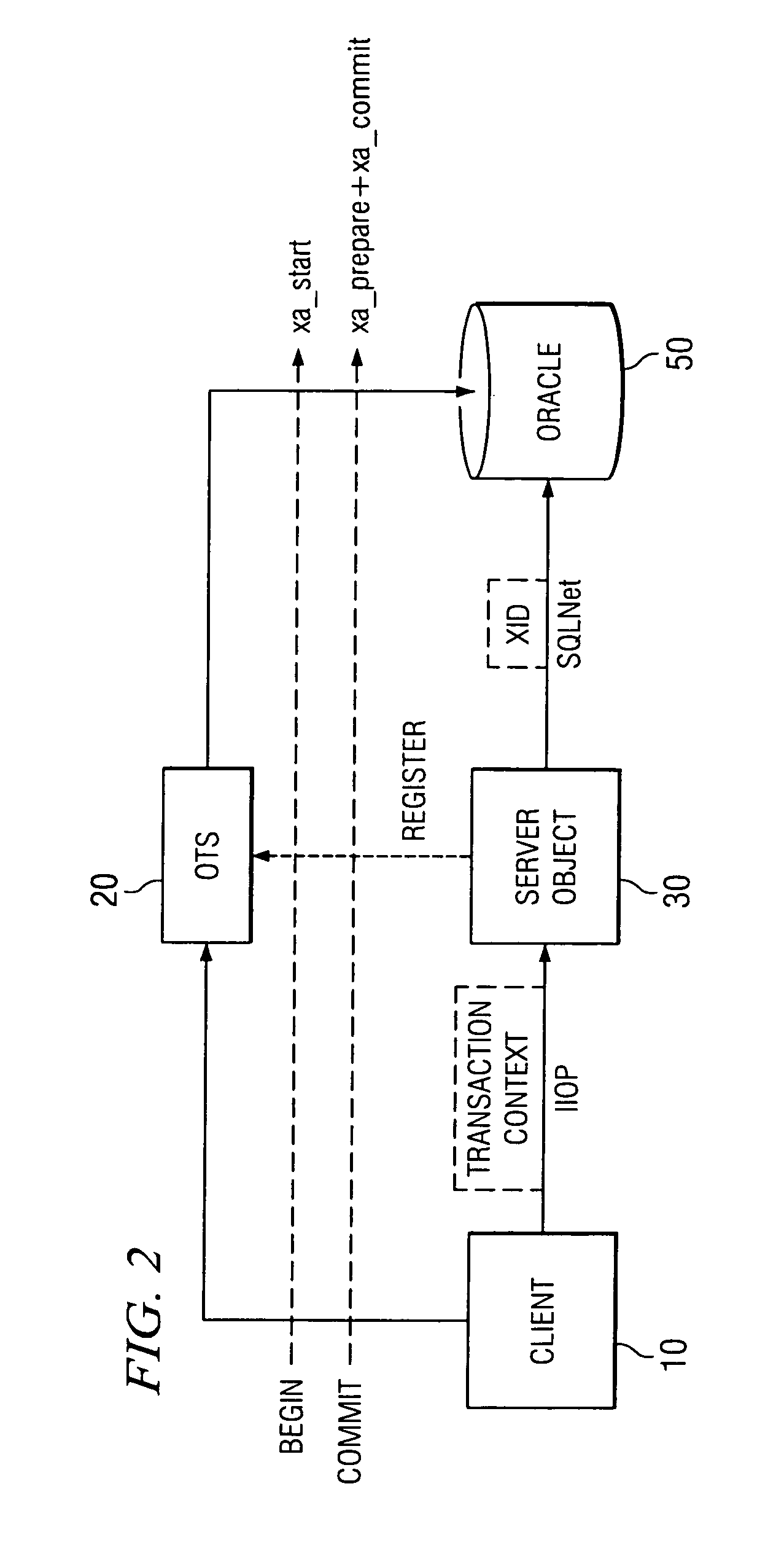Method for middle-tier optimization in CORBA OTS
a technology of distributed object and optimization method, applied in the field of distributed object computing system, can solve the problems of increasing the complexity of programmers, affecting the entire system that is using the account interface, and applications are often not scaleable, and achieve the effect of optimizing transactional behavior
- Summary
- Abstract
- Description
- Claims
- Application Information
AI Technical Summary
Benefits of technology
Problems solved by technology
Method used
Image
Examples
Embodiment Construction
[0081]The present invention (referred to as ENCORE (Enterprise Component Reusable framework)) is a component based framework that builds on top of industry standard OTS to provide robust distributed transaction management for mission critical business applications. It extends the programming model of OTS by providing a unique usage model that offers both flexibility and ease of use.
[0082]ENCORE defines a very flexible model by which the deployment nature of the server can be specified. Middle-tier or Database-tier can be defined in a deployment descriptor file. It is read in deployment time by the server process. ENCORE will optimize the middle-tier servers by bypassing the control object interpositioning process and handing the control object directly to the next tier. Hence it brings in noticeable performance gains for an n-tiered system.
[0083]This middle-tier optimization is most preferably used in concert with a system for determining the transactional policy based on the use of...
PUM
 Login to View More
Login to View More Abstract
Description
Claims
Application Information
 Login to View More
Login to View More - R&D
- Intellectual Property
- Life Sciences
- Materials
- Tech Scout
- Unparalleled Data Quality
- Higher Quality Content
- 60% Fewer Hallucinations
Browse by: Latest US Patents, China's latest patents, Technical Efficacy Thesaurus, Application Domain, Technology Topic, Popular Technical Reports.
© 2025 PatSnap. All rights reserved.Legal|Privacy policy|Modern Slavery Act Transparency Statement|Sitemap|About US| Contact US: help@patsnap.com



